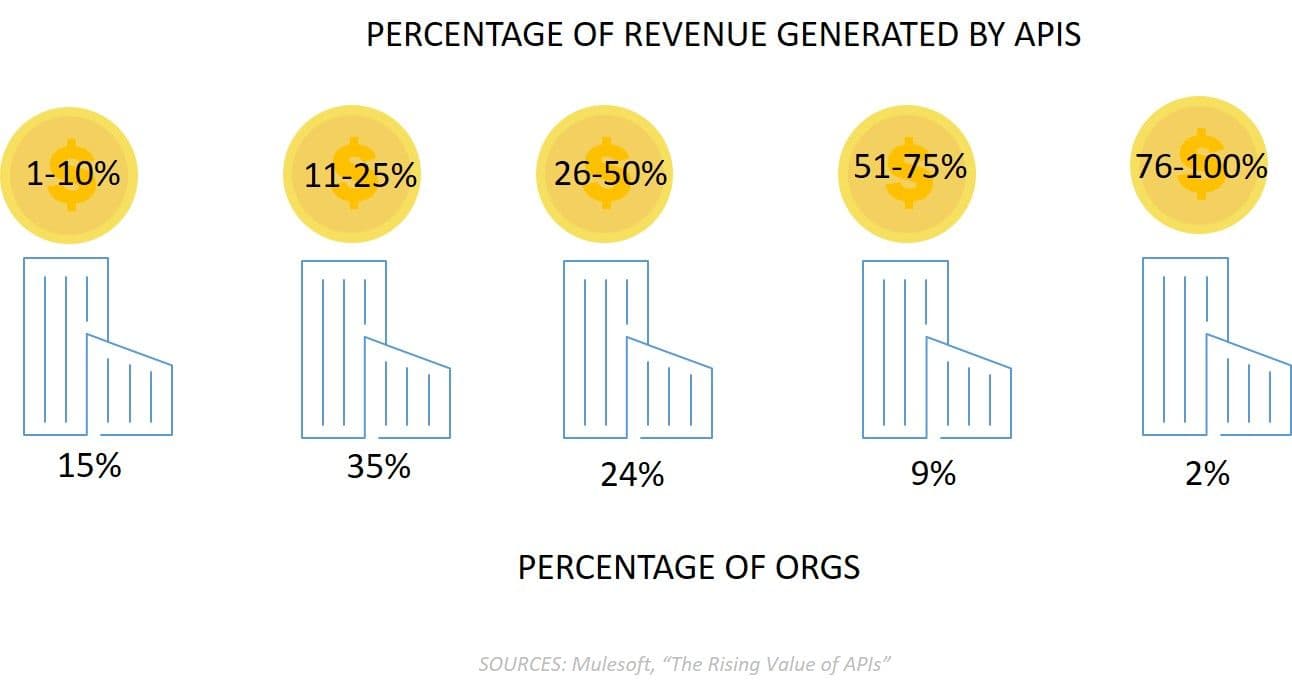APIs are the new CLI.
I've said it repeatedly, and I'll say it again: APIs are the new CLI.
Increasingly, it is through an API that infrastructure and application services are provisioned, configured, and operated. Between automation and integration into deployment pipelines, the API is a critical component that every device - hardware, software, on-premises, or cloud - must have.
To produce a product without an API today is as unthinkable as delivering a device ten years ago without a CLI. To do business in the digital economy without an API is equally inconceivable.

To wit, MuleSoft in its "The Rising Value of APIs" research found that a mere 10% of organizations were deriving 0% of their revenue from APIs. The other 90% are generating varying percentages of revenue from their API efforts, with the bulk doing a brisk business via APIs.
Despite these impressive, revenue-generating results, it is actually productivity that is the most often experienced benefit of APIs. The aforementioned research notes that 58% of respondents claim improved productivity as a direct result of their API implementations.
Which is sort of amusing if you're a pedantic logician, because APIs on their own do not generate value or revenue. They do not improve productivity, nor do they enhance the user experience. Until an API is actually invoked - used - it has no value.
And that is why we're here today - to preach the importance of treating your APIs as part of the user experience.
Who Uses APIs and Why They Use Them
According to the State of API Integration 2018, more than half (60%) of organizations drive API adoption by making them publicly available to any developer. Social media broadly falls into this category, as do many providers of products in just about every market. Indeed, F5 falls into that category with our iControlREST API that enables integrations, automation, and management of the BIG-IP platform. The API isn't all that useful if you don't have a BIG-IP, but if you do the API is public and supported by a robust community.
More than half (56%) also offer platforms that enable developers to build integration services. Just over a third (35%) offer SDKs to make integration easier for developers, and 42% are offering pre-built integrations that non-technical users can leverage.
The answer to 'who uses APIs' then seems to be easy: developers. But 'developers' is a broad term today that should encompass a variety of domains including software, operations, and even business. Because the truth is that a lot of folks (wave at the camera, NetOps) are using APIs to automate, orchestrate, and manage infrastructure, services, and applications today.
In other words, the users of your API are often the same as your users. And that means the API is necessarily part of the user experience.
One of the impacts of this is that APIs shouldn't - and really can't - be just a REST-enabled version of the CLI. In fact, based on responses in the State of API Integration, users are demanding APIs are tailored to meet the use case they're trying to build with them:
How Organizations are driving API adoption today
- 60% Public API, open to any developer
- 56% Platform that enables developers to build integrated services
- 42% Pre-built integrations that non-technical users can leverage
- 35% SDKs to ensure integration is easy for developers
What is the highest demand from customers and partners for API integration?
- 47% Customized APIs that fit a specific business need
- 19% Better documentation
- 19% "No code" integration templates
- 13% SDK wrappers for APIs they need and use
The question today is no longer do you an API, it's do you have the right APIs. You may actually need to present more than one API. A public, granular API for focused integration, extension, or development of new products. Another "low-code" option for business users in addition to SDK-like offerings that focus on operations or workflows.
If you aren't treating your API as part of the user experience - and tailoring them to your target users - you may find adoption faltering and, by extension, your business.
About the Author

Related Blog Posts

Build a quantum-safe backbone for AI with F5 and NetApp
By deploying F5 and NetApp solutions, enterprises can meet the demands of AI workloads, while preparing for a quantum future.

F5 ADSP Partner Program streamlines adoption of F5 platform
The new F5 ADSP Partner Program creates a dynamic ecosystem that drives growth and success for our partners and customers.

Accelerate Kubernetes and AI workloads with F5 BIG-IP and AWS EKS
The F5 BIG-IP Next for Kubernetes software will soon be available in AWS Marketplace to accelerate managed Kubernetes performance on AWS EKS.
F5 NGINX Gateway Fabric is a certified solution for Red Hat OpenShift
F5 collaborates with Red Hat to deliver a solution that combines the high-performance app delivery of F5 NGINX with Red Hat OpenShift’s enterprise Kubernetes capabilities.
F5 Silverline Mitigates Record-Breaking DDoS Attacks
Malicious attacks are increasing in scale and complexity, threatening to overwhelm and breach the internal resources of businesses globally. Often, these attacks combine high-volume traffic with stealthy, low-and-slow, application-targeted attack techniques, powered by either automated botnets or human-driven tools.
Phishing Attacks Soar 220% During COVID-19 Peak as Cybercriminal Opportunism Intensifies
David Warburton, author of the F5 Labs 2020 Phishing and Fraud Report, describes how fraudsters are adapting to the pandemic and maps out the trends ahead in this video, with summary comments.
